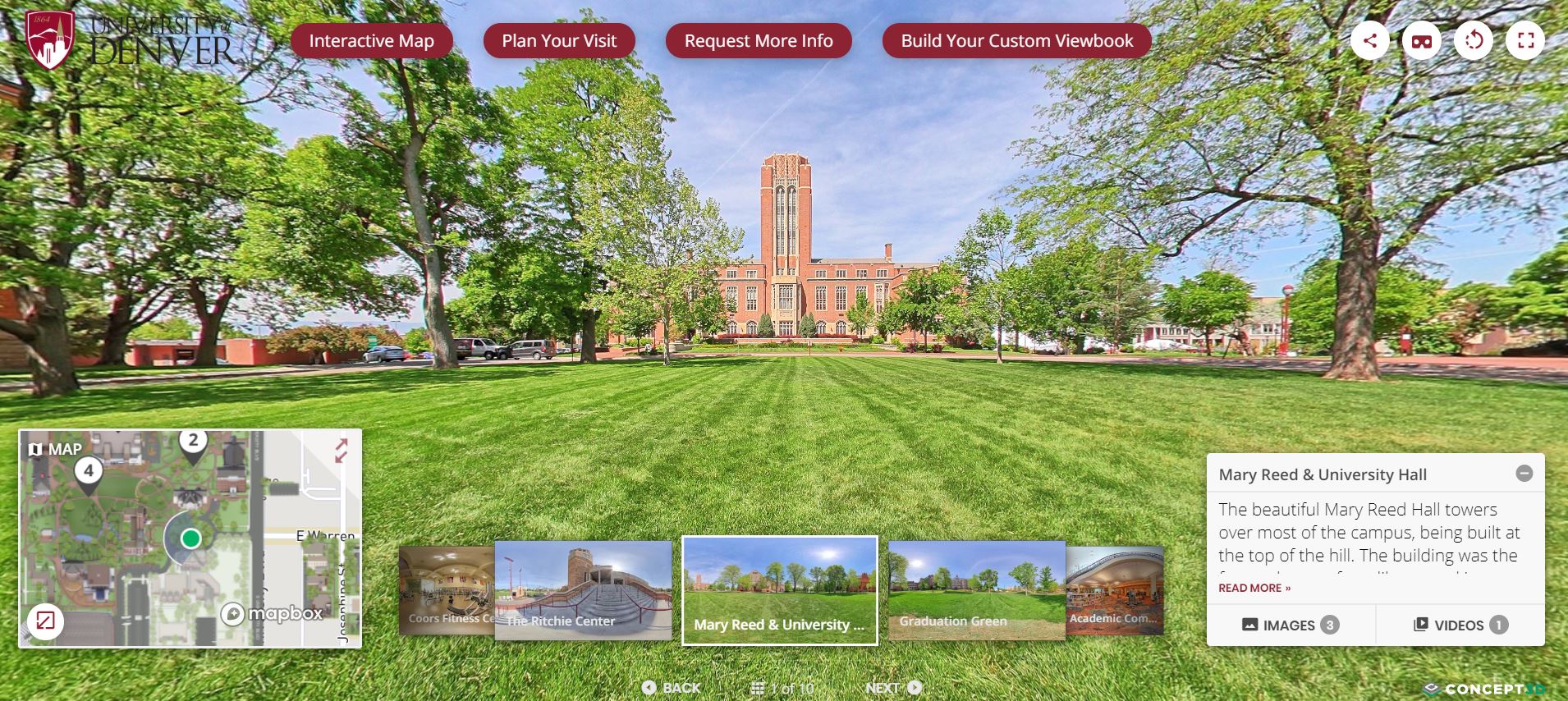Offering virtual tours – or at least some sort of interactive media – has become the norm for college and university campuses. But before diving into a whole new initiative, it’s a fair question to ask whether or not virtual tours work. Are they worth the money? Do they offer a return on the investment? These are a few of the questions that may be holding you back from taking the leap into upgrading your digital experience.
In the 2019 E-expectations(R) trend report by Ruffalo Noel Levitz (RNL) & OmniUpdate, titled “How to Amplify Digital Engagement of High School Students During the College Search Process,” among the key findings was the changing nature of what piques the greatest interest among high school students, and key recommendations that colleges and universities can make to better meet those needs.
The first two key takeways from the 2019 E-Expectations report address 1) the importance of mixing a variety of media – including a specific mention of VR tours – into the mix, and 2) Using visual content – images, videos, etc. – as much as possible to increase engagement.
Clearly, a visual-heavy mix of compelling media will help you stand out. But another trend impacts virtual tours as well: personalization. Prospective students want content that is catered to them, so it’s a really smart idea to offer different virtual tours that address those interests. Examples of this are virtual tours of specific academic programs, dormitories, off-campus areas of interest (such as local attractions and recreation).
Over the course of more than 10 years of supporting higher education with immersive campus maps and virtual tours, we’ve learned some interesting lessons and data points. Here are a few:
Virtual Tours: The Numbers Don’t Lie
We have created over 300 higher education virtual tours and the patterns and statistics tell a strong story.
- When prompted, 40% of virtual tour users leave their contact information
- 2 out of 5 students use both the virtual tours and the campus map during their search process
- The average age of higher ed virtual tours is 16.6
- 66% of 360-degree virtual tour users return within six months
- Higher education institutions can generally expect a 69% YoY growth in leads from virtual tours
Happy Customers
Don’t take our word for it – hear it from some of our customers who have used our software to create their own immersive experiences:
“The map’s ability to integrate video within campus tours is also one of the best features that allow us to showcase our campus beauty and what sets us apart from others.” – The University of Mississippi
“We needed to replace our two dimentional, flat, hard to understand, and not at all customizable/interactive map system we had been using since it was created. [Concept3D] seems to fill the need precisely. It is editable, custom and represents the lay of the land so that visitors can easily navigate our campus.” – Guilford College
“We love the create a tour on the map feature, as this is something that multiple departments, like admissions, have wanted to create and utilize for potential students and events. We also love the 360 tour itself, as this is a fantastic way to showcase our campuses and bring a personal touch to who we are as a university to those not yet familiar.” – Mount St. Mary University
“My university has been a Concept3D customer for about eight years. With the help of their support team, we have achieved our goal of presenting an informative interactive experience in which prospective students can “visit” the campus from wherever they are. For example, prospective students can use this tool to tour the interior of student residence halls.”
“We explored setting up our own interactive map and virtual tours, but Concept3D has offered a solution to both that made more sense than reinventing the wheel, and they’ve added features we never even thought of.”
“The product was easy to implement and has been easy for our staff to use from day one. We’ve integrated the campus map and tour with our main website, events, and admission communications. There are endless possibilities with how the product can be used to enhance the user experience.”
Conclusion
Yes, virtual tours are an investment, but in our experience, the payoff grows and the ROI is worth it. Virtual tours help schools reach and engage with potential, current and former students and staff and the tours are interesting and compelling, offering a deeper dive into life on campus.
So it’s time to embrace today’s evolving technology and invest in a virtual campus tour for your school. Our experience in higher education has enabled us to build a large range of experiences that help colleges and universities recruit students and engage with alumni.
Contact us today to start a conversation.

